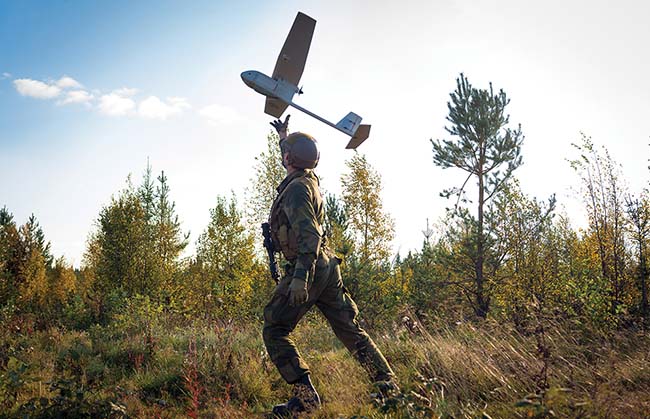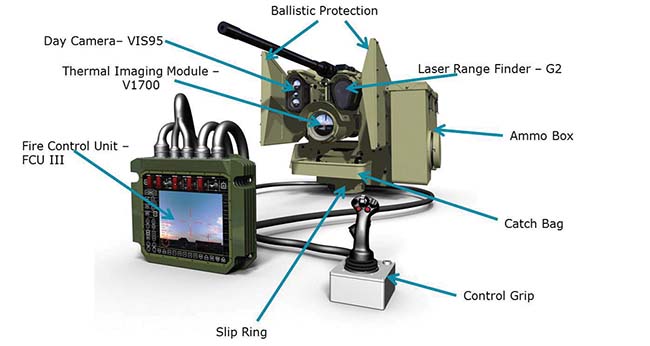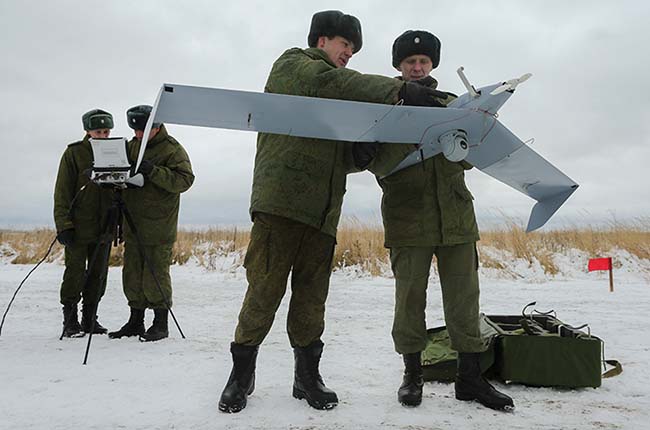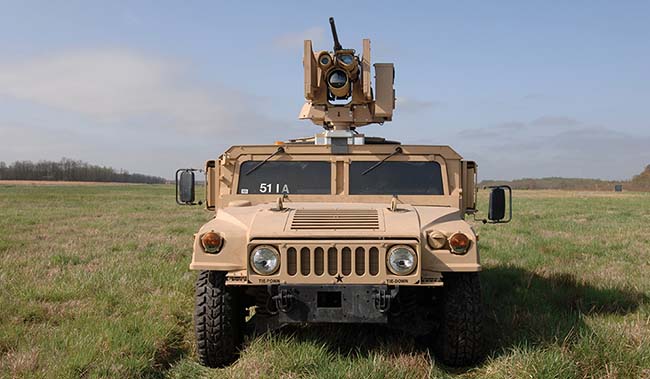Unmanned Aerial Vehicles (UAVs, also known as drones) are a component of an unmanned aircraft system (UAS) which includes the UAV, a ground-based controller and a communication system between the two. The revolutionary impact of Remotely Piloted Aircraft Systems (RPAS) on the future battlefield has been anticipated for quite some time. The US has led the world in the use of RPAS for both reconnaissance and strikes against high value targets.
Ukraine Conflict
In the Ukraine conflict, UAVs have been used on both sides in significant numbers. UAVs can have a dramatic impact that is quite different from anything experienced in the unilateral American use. The first use of drones in this conflict was observed in May 2014, when the Russian “separatists” began using small fixed-wing tactical UAVs. From mid-July through the end of the Russian summer offensive in early September, Russia flooded the area with at least five types of drones, each operating at different heights. One example: In September 2014, an overflying drone identified a Ukrainian position. Within 15 minutes of the initial over-flight, the position was destroyed with “GRAD” BM-21 MLRS. The drone returned shortly after to do an immediate bomb-damage assessment. Later the same year, another similar strike occurred when a position was hit by “GRAD” fragments. There were two UAVs over the position—a quadcopter at 800ft and a small fixed-wing drone at about 2,500ft. Technological advances have made the battlefield more dynamic than ever, which means weapon systems must quickly adapt to counter threats.
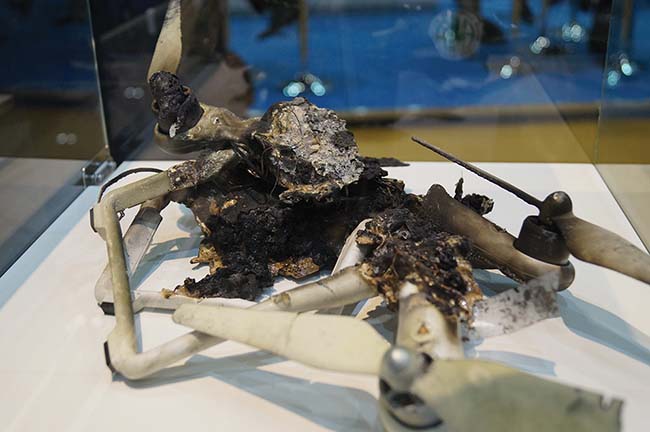
ISIL Ramped up Fight with Weaponized Drones
Since mid-2014, the Islamic State of Iraq and the Levant group (ISIL, also known as ISIS) had held Mosul until recently. In addition to using drones for reconnaissance in Iraq, ISIL had been sending them out with bombs attached. Lacking effective countermeasures against what were potentially flying IEDs, the coalition forces were forced to flee from the simple and cheap commercial drones, causing widespread disruption. The drones, possibly quadcopters, reportedly dropped at least 10 explosives during an hour of fighting. ISIS isn’t the first to use this tactic in Syria: A video, released on social media on August 2016 by a Hezbollah-affiliated media outlet, appeared to show the unmanned aerial vehicle dropping cluster bombs on three Syrian rebel positions, in support of the Syrian regime in the countryside surrounding Aleppo.
The purpose of this article is to present 40mm programmable ammunitions’ capability against small drones fired by an Automatic Grenade Launcher on a KONGSBERG PROTECTOR remote weapon station and to provide some other examples of counter-drone solutions.
Nammo
Before Nammo developed its programmable ammunition technology, conventional 40mm ammunition rounds had not changed for over 40 years. In 2002, Nammo initiated a technology program to explore programmable ammunition to introduce more capability to the round. Nammo’s 30mm, 40mm, 120mm and M72 programmable ammunition has been developed over the last 15 years to be tactically flexible, highly accurate, reliable and cost-effective.
This weapon ammunition includes:
- M72—Demonstrated multiple times since 2011, both remotely and man-fired, projecting programmable ammunition. Development is ongoing at Nammo Talley, exploring the re-use of electronics and a Fuze setter.
- 30x173mm RF—Demonstrated since 2015, with a development focus on optimizing Fuze programming and fragmentation.
- 120mm Programmable Fuze—Complete with super-quick impact function with a programmable delayed impact.
- 40x53mm high velocity programmable ammunition for automatic grenade launchers (AGLs).
These serve to increase troops’ capabilities to defeat enemies in covered and concealed positions with pinpoint accuracy. The programmable ammunition is proven to be effective against concealed targets and unmanned aerial vehicles as well as light armored and technical vehicles. The whole range is quickly adaptable to counter threats. The Nammo range of air burst products can be easily integrated into existing weapon platforms and fire-control systems. A wireless communication system allows for precise detonation, ahead, over, on or within a concealed target, even around a corner. The system architecture is quite basic. In addition to the innovative programmable ammunition, it consists of a programming unit and an antenna that is mounted on either the weapon or the vehicle. The distance to the target is entered into the programming unit either manually or based on input from an automated range finder. Then, in contrast to competing systems, instead of programming the ammunition before it is fired, or inside the barrel, it receives its instructions just as the shell leaves the gun. This eliminates the need for upgrades to the barrel. A standard antenna transmits the distance to the ammunition as a signal. Data received activates a detonation countdown. The impact point is decided, and the airburst detonates to its precise target. The airburst family can be used with a range of systems, from shoulder-launched weapons to tanks.
An Automatic Grenade Launcher Knocks out a Drone
The Norwegian Army wanted to evaluate how quickly, easily and cheaply a counter-UAV system could be implemented to take out a tactical drone thanks to the Airburst capability of Nammo’s programmable ammunition. In October 2017, KONGSBERG developed a demonstrator with low costs using the KONGSBERG PROTECTOR RWS (Remote Weapon Station) mounted with the HK GMG (Grenade Machine Gun) for a test firing and proof of concept. The HK GMG is a combat-proven, belt-fed AGL that fires high-impulse 40mm grenades in a variety of applications. The firing rate is 350 rounds per minute. In this case Nammo’s Airburst ammunition and the SQUIRE ground surveillance radar by the Thales Group were used. Officially no data are published, but it has been reported that the test shooting and the detection took place up to 1,000m; the weapon has a range up to 1,500m—even in flat direct fire. Nammo’s programmable 40mm ammunition is as mentioned earlier developed to achieve more precise targeting in defilade or to neutralize enemy forces that are avoiding direct fire by protection rather than being a dedicated anti-drone ammunition system. It is instead an upgrade to an existing weapon system, allowing it to be effective against a wide range of threats. The ability to take down drones is therefore mainly a side effect and a demonstration of the flexibility of the technology, rather than a key design requirement. Another advantage of the 40mm programmable ammo is its ability to explode in a highly controlled way to avoid damaging surroundings or continuing on its path to hit civilian targets. This is especially important in dense urban environments or in situations where the unmanned aerial vehicle (UAV) is carrying explosives that need disabling or detonating at a safe height.
The KONGSBERG PROTECTOR RWS
KONGSBERG is the world’s leading provider of Remote Weapon Stations. The PROTECTOR Family of Remote Weapon Stations (RWS) is a system suitable for any mission whether on land or at sea, and on mobile or static platforms for remote operation payloads ranging from small caliber weapons to medium caliber automatic cannons. The system is modular, and all of the different variants of the PROTECTOR RWS share the same baseline technology. Three quarters of all the weapons stations KONGSBERG has produced are on American vehicles and have been in use in the US Army in one form or another since 2001(M151 PROTECTOR, M153 PROTECTOR, CROWS).
In August 2007, KONGSBERG was awarded the prestigious contract of CROWS II Common Remotely Operated Weapon Station by the US Army. CROWS is a joint acquisition program for weapon stations for the US Army vehicle programs. In August 2012 KONGSBERG was awarded the follow-on CROWS contract, enabling KONGSBERG to continue the well-established cooperation with the US Army. PROTECTOR’s capabilities allow soldiers to operate out of harm’s way from a protected position using stabilized precision optics and lasers to observe, detect and engage targets with increased accuracy and reduce collateral damage.
A feature of the PROTECTOR’s aim and fire function is the Detached Line of Sight. It enables the gunner to keep his sights on target, independent of the ballistic solution for the weapon and ammunition in use. The CROWS is compatible with four major crew weapon systems. It is designed to mount on a variety of vehicle platforms and supports M2 .50 Caliber Machine Gun, M240B Machine Gun, M249 Squad and the 40x53mm Mark 19 Automatic Grenade Launcher Weapon. As already described, the 40x53mm high-velocity grenades use programmable and laser-measured data transmitted into the grenade, which then program the grenade to airburst at that particular altitude. The burst maximizes the effectiveness of the explosions around a drone. This technology would have been very difficult to fit in a 40x46mm low-velocity grenade typically fired from hand-held grenade launchers due to the size and the lack of range with most of these designs (max effective 400m). However, with an automatic grenade launcher, the max effective range is pushed out to 1,500m (Mk 19 AGL), and the 40x53mm has more space to fit the explosive charge as well as the timing mechanism. PROTECTOR is a mature and proven product based on millions of hours of operational experience in combat zones with an unprecedented operational readiness of 99%. The PROTECTOR is in full-scale production and is qualified for global operations combined with a close cooperation with Defense Forces worldwide. KONGSBERG has delivered nearly 20,000 remote-controlled weapons stations to 19 nations. As of March 2018, the user list includes Qatar.
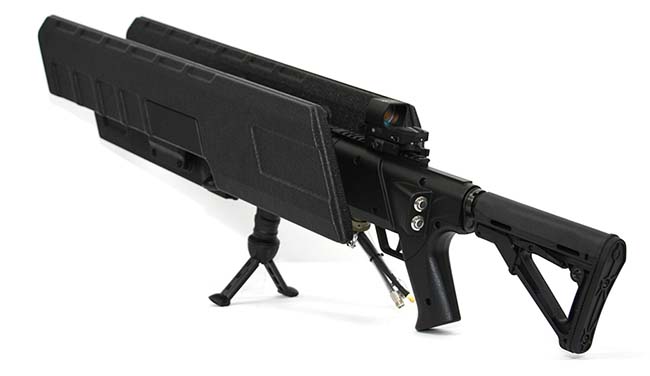
Other Counter Drone Solutions
To counter a UAV System it must first be detected, for example by use of operational radars, infrared cameras and direction finders. Based on an extensive threat library and real-time analysis of control signals, a jammer then interrupts the link between drone and pilot and/or its navigation. The defeat solutions that have been available include kinetic/hard kill (bullets, nets, lasers, etc.) and non-kinetic/soft kill (jammers that disrupt GPS and common ISM bands reception, cyber/hacking, etc.). The demand for anti-drone weapons is expanding. The rapidly emerging DroneGun MKII market is a clear reflection of that. Australian media reported in February 2018 that a drone breaching an aerial exclusion zone around the Commonwealth Games’ venues was neutralized using DroneShield LLC’s DroneGun MKII, and the drone operator was apprehended. The incident was revealed as police and defence showed off some of their might ahead of the Commonwealth Games event including an RAAF FA-18 Hornet flyover of the Broadwater Parklands. Oleg Vornik, DroneShield’s CEO commented, “Much of the use of our products is not publicly known. Security and military agencies rarely comment on deployments and specific incidents. We are proud to have secured the skies for the public at the Games, as is evident from this incident which became public.” Queensland Police Service utilized multiple units of DroneShield’s DroneGun MKII for aerial protection. DroneGun MKII (both MKII and Tactical versions) is a directional rifle-shaped jammer. The advantages of a jammer vs. kinetic (like grenades) are that there’s no collateral damage, no ammunition, no charge time, drone can be retained for forensic investigation, drone can be forced to fly to start point to identify pilot, no need to aim (30-degree beam), and a jammer can be effective against swarms.
What’s the best way to shoot down a drone? For many in the defense industry, the solution to flying robots may be a compact laser weapon placed on vehicles to protect the soldiers on the ground from attacks. Raytheon, for example, has integrated its multi-spectral targeting system with a high-energy laser into an unprotected, all-wheel drive, off-road MRZR vehicle from Polaris. The US Army tested the system in the Maneuver Fires Integrated Experiment together with other weapons in counter UAS use. The laser was able to destroy 12 flying UAS of classes I and II: Class I is a small UAV, such as an RQ-11 Raven UAV (platoon-level asset); a Class II UAV would have supported the Infantry and Mounted Combat System Company Commanders with reconnaissance, security/early warning, target and designation. Anti-drone operations are extremely complex and place high demands on rules of engagement, sensors and targeting procedures. Nammo’s ammunition does not alone resolve this issue, but it offers ground forces something they so far have been lacking, which is a cost-effective weapon that could be used even in urban areas.
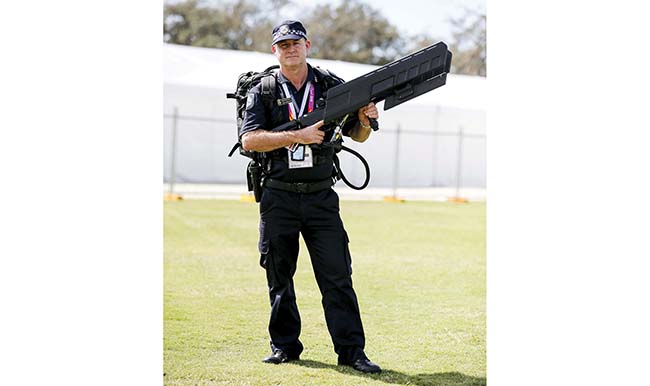
Programmable Ammunition for AGLs
[For a description of AGLs, see previous article titled, “The Infantry Soldiers’ Grenade Launchers” in SADJ, Vol. 10, No. 3.]
With the introduction of the 40x53mm MK285 Programmable Pre-fragmented High Explosive (PPHE), Nammo became the first company to qualify High Explosive—Radio Frequency (PPHE-RF), further improving adaptability by incorporating a wireless communication solution to program the ammunition. The (NM 264) 40x53mm High Explosive Dual Purpose—Radio Frequency (HEDP-RF) has also been developed with wireless programming and allows for different target scenarios due to its HEDP and/or RF functions. Demonstrations also have proven this round to be very effective against UAVs.
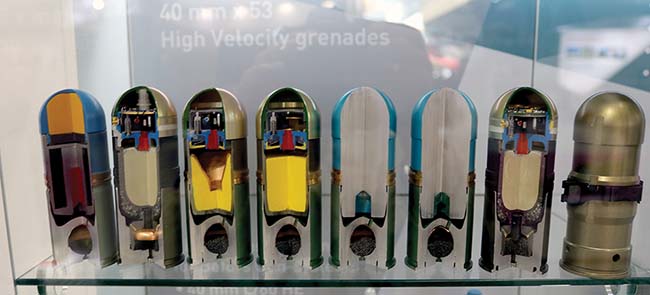
Conclusion
Unmanned systems and technologies are making a big game change throughout the world. The use of Unmanned Aerial Systems (UAS) for military, commercial, civilian and scientific applications is growing rapidly, along with detection and anti-drone systems.
Nammo’s 30mm and 40mm airburst technology can now be tactically used to take out discovered drones within weapon range with an accurate response and with minimal risk of collateral damage.





